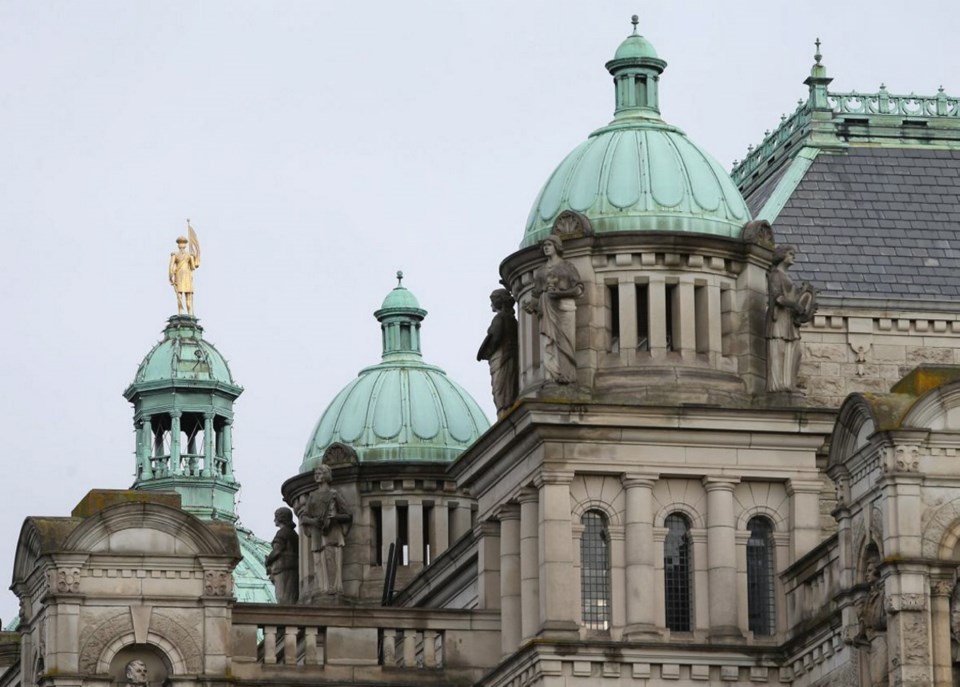Why hasn't a winner been declared?
The initial vote count, which includes advance and general voting but not absentee ballots, was too close to call. Early results give the Liberals 43 seats, the NDP 41 and the Greens three — but five ridings could go either for the Liberals or the NDP. We will not have the final count for two weeks.
1. Initial recounts
A candidate or official agent can request an initial recount if the difference between the top two candidates is 100 votes or fewer, or if there is a belief that errors were made in the acceptance or rejection of ballots, or if the ballot count doesn’t match the number of votes for a candidate. The written request must be received within three days after general voting day.
2. Absentee ballots and the final count
This happens May 22 to 24, allowing time for these ballots to be received at district electoral offices. Absentee votes are those cast in other districts, by mail, at special voting opportunities (for example, when election officials visit a remote work camp or hospital), or at sites that were not the assigned voting places.
“In B.C., you can vote at any voting place. So if you reside in Victoria but you voted in Prince George, your ballot would go into a certification envelope and be sent to your home district of residence to be counted there,” said Andrew Watson, communications manager for Elections B.C.
All eyes are on Courtenay-Comox, where just nine votes separate NDP candidate Ronna-Rae Leonard from Liberal candidate Jim Benninger.
In 2013 in the Comox Valley, 3,500 absentee ballots were counted after election day. Across the province in 2017, about 176,000 absentee and special votes were cast, representing almost 10 per cent of all votes.
Other districts where absentee ballots could make a difference:
• Coquitlam-Burke Mountain: Liberal Joan Isaacs leads NDP Jodie Wickens by 170 votes.
• Maple Ridge-Mission: NDP’s Bob D’Eith leads Liberal Marc Dalton by 120 votes.
• Richmond-Queensborough: Liberal Jas Johal leads NDP’s Aman Singh by 263 votes.
• Vancouver-False Creek: Liberal Sam Sullivan leads NDP’s Morgane Oger by 560 votes.
3. Judicial recounts
After the final count, parties can ask for a judicial recount, through the Supreme Court of British Columbia. A voter, candidate, representative or district electoral officer can make the request if they believe ballots were improperly accepted or rejected, or if ballots have not been properly accounted for. The district electoral officer must apply for a judicial recount if there is a tie or if the difference between the first two candidates is less than 1/500th of the total ballots considered. The application must be made within six days after the final count is done and official results are declared.
Then what?
Once all ballots are counted and/or recounted, the provincial government could take a few forms:
Majority government
Majority government, where one party holds more than half of the seats.
The legislative assembly has 87 seats. The Liberals or NDP would have a majority government with 44 or more seats. A party with 45 or more seats would have a comfortable majority.
If the leading party has 44 seats, it will have a problem, because it traditionally elects one of its own members as Speaker. The Speaker does not vote in the legislature except to break a tie, which drops the party’s general voting members to 43 — below the majority threshold.
Minority government
When the initial count was completed early Wednesday morning, the Liberals were in the lead with 43 seats. That is less than half the number of seats, which means that unless more seats are added through absentee vote counts and recounts, the Liberals will have a minority government. If the final results give the NDP more seats, then the NDP could form a minority government.
In a minority government, no party could pass legislation without the support of MLAs from other parties. In this scenario, the Greens would hold the balance of power.
Coalition government
A coalition government is created when two political parties form a temporary alliance large enough to form government. It would be up to the Greens to consent to form a coalition with either the Liberals or NDP. Any agreement would likely include promises to the Greens, such as a cabinet seat for Leader Andrew Weaver.
When will we know?
The final count concludes Wednesday, May 24. After that, there’s a six-day period where a judicial recount may be requested. If the court registry receives a request, it has 72 hours to provide notice of the date, time and location for the judicial recount. The date set must be no later than eight days after the request is filed.
The Election Act doesn’t specify the time by which a judicial recount must be completed.



